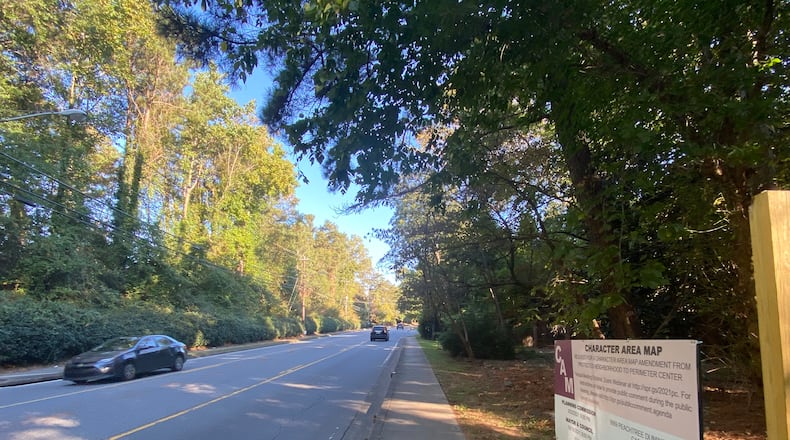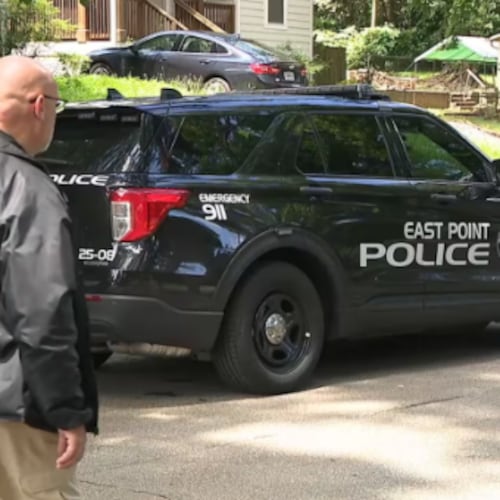A developer’s plan to bring denser housing to a tree-canopied residential section of Peachtree Dunwoody Road in Sandy Springs wasn’t approved Tuesday, but City Council members gave him more time to change their minds.
Gary Hammond’s request to change a land use designation had previously been rejected by city staff, the Planning Commission and neighboring residents at community meetings.
The 1.27-acre property at 6669 Peachtree Dunwoody Road is currently designated as “protected neighborhood” with zoning only for single family homes. Hammond, who has a contract to purchase the property from owner Michael Austin, said he wants the property to become “urban neighborhood.” That would allow zoning for multi-family units and some office development, according to the city code.
The urban neighborhood designation request is a change from Hammond’s original ask in July for the property to be changed to “perimeter center.” That would allow more development than residents and city staff have said is appropriate for the area.
If a change is approved, Hammond, the principal of Landbridge Development, would still have to go through a subsequent process to rezone the property, Sandy Springs spokesman Jason Fornicola said Wednesday via email.
Landbridge builds affordable apartments but Hammond has not said what he plans to bring to Sandy Springs.
During political forums this election season, residents and council candidates have said it’s essential to protect residential neighborhoods from more dense development that would change its look and feel.
Austin told the Planning Commission in September that he moved out of the now vacant home on Peachtree Dunwoody Road three years ago. “It’s falling down, rats and raccoons, trees falling down,” Austin said, in his support of Hammond.
The Peachtree Dunwoody neighborhood lies under a covering of trees and includes townhomes, single family residences and apartment communities just down the road. The homeowners are also neighbors to commercial development.
Townhomes stand on one side of Austin’s property and Newell Brands parking deck and offices on the other. Across the street is the sprawling Embassy Row office campus, the home of the Art Institute of Atlanta.
About the Author
Keep Reading
The Latest
Featured




